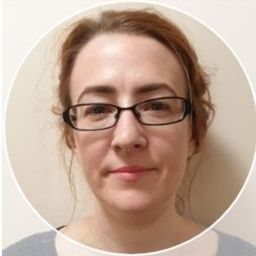Haematology
Review of malaria rapid tests
Haematology
Review of malaria rapid tests
9am – 9.30am BST, 26 September 2023 ‐ 30 mins
Haematology
Abstract
Rapid antigen tests for malaria have been in routine use in UK haematology labs for many years now. However, interpretation of their results, especially in light of the accompanying blood film findings can still prove to be confusing.
The advantages and limitations of these tests will be explored and explained.
Learning outcomes
- Interpretation of malaria rapid test results
- Limitations of malaria rapid tests
- Where malaria rapid tests fit into the wider picture of lab diagnosis of malaria
Speakers

Emma Victory
Team Leader, UKHSA Malaria Reference Laboratory, London School of Hygiene and Tropical Medicine
Morphology Training
Haematology
Morphology Training
9.30am – 10am BST, 26 September 2023 ‐ 30 mins
Haematology
Learning outcomes
This presentation is an introduction to Morphology Training and how this can be achieved in-house and across a Pathology Network
Learning outcomes and points of discussion:
- Your Morphology Training Team
- What do you want to achieve with your morphology training programme?
- Who is it aimed at and how can it be tailored for different grades of staff?
- Different training methods and how are you going to deliver them
- Essential elements that must be included
- Morphology Training Resources available to your team
Speakers

Nicki Lawrence
Principal Biomedical Scientist, University Hospitals of North Midlands NHS Trust
Morphology Quiz
Haematology
Morphology Quiz
10.30am – 11.30am BST, 26 September 2023 ‐ 1 hour
Haematology
Learning outcomes
Interactive quiz on blood cell morphology with a of variety cases covering the everyday and the unexpected. Test your skills anonymously, aimed at those reporting films and those just starting their morphology journey - we are all still learning.
The quiz is multiple choice so anyone can participate. The morphology of the cases, the options and the answers and will be discussed at the session.
Speakers

Dr Michelle Brereton
Chief Biomedical Scientist, Manchester University NHS Foundation Trust
The Blood Film to the Rescue
Haematology
The Blood Film to the Rescue
11.30am – 12pm BST, 26 September 2023 ‐ 30 mins
Haematology
Abstract
Despite major advances in investigating haematological abnormalities, the blood film can still be crucial in diagnosis and patient management. The first major role is the validation of an abnormal blood count and, when it is found to be invalid, finding an explanation for factitious results. Factitiously low platelet counts and factitiously high MCVs are well recognized examples.
When the count is found to be valid, an explanation might be revealed. A blood film may indicate a likely diagnosis within minutes; this can be of vital importance as in acute promyelocytic leukaemia, thrombotic thrombocytopenic purpura, Burkitt lymphoma and certain infections. Sometimes the blood film suggests an uncommon or rare condition the diagnosis of which is important but would otherwise be delayed or elusive.
Learning outcomes
Delegates attending this presentation will:
- Be alert to the unexpected finding on the blood film
- Recognise the unexpected finding
- Understand what is abnormal
- Be able to correlate the abnormality with the information it is providing.
Speakers

Professor Barbara Bain
Professor of Diagnostic Haematology, St Mary's Imperial College Healthcare NHS Trust
vWF Guideline Update
Haematology
vWF Guideline Update
9am – 9.30am BST, 27 September 2023 ‐ 30 mins
Haematology
Learning outcomes
Annette is on the panel updating the guidance provided by the British Society for Haematology on Von Willebrand Disease (VWD) diagnosis.
This presentation will outline the new guidance and compare changes/updates from previous published guidelines.
The delegate will learn which tests are recommend for diagnosis of VWD, how these recommendations have evolved compared to previous guidance and any new assays that are new to the VWD testing repertoire.
Speakers
Dr Annette Bowyer
Scientific Lead for Haemophilia Assays, Sheffield Teaching Hospitals Foundation Trust
Thrombophilia Guideline Update
Haematology
Thrombophilia Guideline Update
9.30am – 10am BST, 27 September 2023 ‐ 30 mins
Haematology
Abstract
Thrombophilia is defined as hereditary and/or acquired conditions associated with an increased predisposition to thrombosis. The previous British Society for Haematology guideline on thrombophilia testing (2012) focused only heritable thrombophilia testing. The updated guideline published in 2022 (1) has a widened scope to include both heritable and acquired thrombophilia especially antiphospholipid antibodies, paroxysmal nocturnal haemoglobinuria, myeloproliferative neoplasm (MPN) and the presence of a JAK2 mutation in the absence of an MPN phenotype. Disorders such as cancer, inflammatory conditions and obesity are associated with thrombosis through multiple mechanisms, but these are not included in the guideline which focuses only the factors identified from laboratory testing.
The key principle in the guideline is that when clinical utility of testing is not clear, thrombophilia testing is not mandatory, and testing should be done only if the result will alter the management of the patient. These guidelines emphasise the importance of identifying antiphospholipid syndrome and JAK2 +/- MPN phenotype because they have a significant impact on management. The guidelines confirm the limited utility of testing for hereditary thrombophilia testing in venous thromboembolism, arterial thrombosis and recurrent pregnancy loss.
1. Arachchillage, DJ, Mackillop, L, Chandratheva, A, Motawani, J, MacCallum, P, Laffan, M. Thrombophilia testing: A British Society for Haematology guideline. Br J Haematol. 2022; 198: 443– 458. https://doi.org/10.1111/bjh.18239
Learning outcomes
Delegates will understand:
- The value of thrombophilia testing in guiding anticoagulant therapy.
- When to request specific thrombophilia tests.
- The role of thrombophilia in determining pregnancy outcomes.
- When to test for thrombophilia in obstetric practice.
Speakers

The effects of long COVID on coagulopathy
Haematology
The effects of long COVID on coagulopathy
10.30am – 11am BST, 27 September 2023 ‐ 30 mins
Haematology
Learning outcomes
Delegates will gain understand:
- Effects of COVID-19 infection on coagulation
- residual effects of COVID-19 on coagulopathy
- correlation and linking of infection to clotting parameters
Speakers
Direct Oral Anticoagulants (DOAC) in the Laboratory - Pearls and Pitfalls
Haematology
Direct Oral Anticoagulants (DOAC) in the Laboratory - Pearls and Pitfalls
11am – 11.30am BST, 27 September 2023 ‐ 30 mins
Haematology
Learning outcomes
Delegates will understand:
- The key role of the laboratory in DOAC therapy
- Limitations of standard coagulation testing in patients on DOACs
- Review of DOAC testing options
- Clinical impact of DOAC levels
- The importance of retaining familiarity with warfarin
Speakers
Dr David Sutton
Consultant Haematologist, University Hospitals of the North Midlands NHS Trust
Effects of direct thrombin inhibitors [dabigatran/argatroban/bivalirudin] on tests of haemostasis
Haematology
Effects of direct thrombin inhibitors [dabigatran/argatroban/bivalirudin] on tests of haemostasis
11.30am – 12pm BST, 27 September 2023 ‐ 30 mins
Haematology
Speakers
Meet your Haematology Portfolio examiners
Haematology
Meet your Haematology Portfolio examiners
12.45pm – 1.45pm BST, 27 September 2023 ‐ 1 hour
Haematology
Speakers
Gavin Knight

Nicki Lawrence
Principal Biomedical Scientist, University Hospitals of North Midlands NHS Trust
Iron Deficiency Polycythaemia: A Clinical Case Study
Haematology
Iron Deficiency Polycythaemia: A Clinical Case Study
2pm – 2.20pm BST, 27 September 2023 ‐ 20 mins
Haematology
Abstract
A case study into iron deficiency polycythaemia diagnosis, looking at the pathology and how this relates to the results we see and investigations to confirm diagnosis.
Learning outcomes
Through the discussion of a clinical case this presentation delegates will:
- Build knowledge around polycythaemia diagnosis
- Recognise the signs of Polycythaemia from FBC results
- The importance of indices when reviewing FBC results
Speakers
Elizabeth Handley
Biomedical Scientist and Trainee Clinical Scientist , Nottingham University Hospitals NHS Trust
Transient Abnormal Myelopoiesis
Haematology
Transient Abnormal Myelopoiesis
2.20pm – 2.40pm BST, 27 September 2023 ‐ 20 mins
Haematology
Speakers

Nicki Lawrence
Principal Biomedical Scientist, University Hospitals of North Midlands NHS Trust
Introduction of New D-dimer Assay in Response to the COVID-19 Pandemic (HSD Case Study)
Haematology
Introduction of New D-dimer Assay in Response to the COVID-19 Pandemic (HSD Case Study)
2.40pm – 3pm BST, 27 September 2023 ‐ 20 mins
Haematology
Abstract
Coagulopathy has been shown to play an important role in COVID 19 infection. Reported abnormal coagulation laboratory values in severe COVID-19 are most notably a 3-to-4-fold increase in D-Dimer (Yao et al., 2020).
Several studies showed that elevated D-dimer in COVID-19 patients is associated with higher mortality. A retrospective cohort study carried out by Zhou, et al. (2020) also associated D-Dimer > 1000ng/ml with higher odds of in-patient death.
At the onset of the COVID 19 pandemic, there was no consensus as to how D-Dimer levels should be used for the management of COVID-19 patients. In April 2020, PAHT decided to use a D-Dimer cut-off of 1000 ng/ml to determine anticoagulation dosage. The source of reference used by PAHT in their decision making employed a D-Dimer assay with a cut off value of 500 ng/ml for the exclusion of venous thromboembolism (VTE). This raised an issue as the source of reference used by PAHT at the time employed a D Dimer assay with a cut-off value of 230 ng/ml for the exclusion of VTE. This meant the trust was unable to implement the new COVID 19 care bundle at the time. The haematology laboratory wanting to do whatever possible to assist patient care agreed to change the current D-Dimer methodology immediately to support the trust COVID 19 care bundle.
The verification and implementation of the new D-Dimer assay with cut of 500 ng/ml for the exclusion of VTE was completed within four weeks. A risk assessment and a change control were put in place to ensure users were made aware of the change in cut-off limit.
This verification and implementation of the new assay was possible through the hard and collaborative work of the haematology technical team with shared vision, motivation coupled with team engagement and strong leadership.
Learning outcomes
Delegates will gain knowledge of:
- The key role the coagulation laboratory played in responding to the COVID 19 pandemic.
- The use of D-Dimer assay as a prognostic maker during the COVID 19 pandemic.
- The effectiveness of the werfen D-Dimer HS500 kit
- The importance of shared vision and team engagement in change management
Speakers

Eva Nkansah CSci FIBMS
Lead Biomedical Scientist, The Princess Alexandra Hospital NHS Trust
Voxelotor in Sickle Cell Disease and its interference in haemoglobin analysis
Haematology
Voxelotor in Sickle Cell Disease and its interference in haemoglobin analysis
3pm – 3.30pm BST, 27 September 2023 ‐ 30 mins
Haematology
Abstract
Sickle cell disease is a monogenetic disorder caused by a mutation in the beta-chain of haemoglobin that leads to the generation of sickle haemoglobin(HbS) which, post deoxygenation state, undergoes polymerisation causing vaso-occlusion crisis .
Voxelotor, a recently approved novel therapeutic agent, modulates the Hb’s affinity for oxygen and thus increases the proportion of oxygenated Hb. This reduces the polymerisation of HbS and reduces the formation of sickle cells. Drug trials have demonstrated that Voxelotor leads an improvement in Hb level with decreased reticulocytes, bilirubin, LDH and decrease the frequency of sickle cell crisis.
One approach to monitor Voxelotor treatment is by quantifying HbS in the laboratory either by high performance of liquid chromatography(HPLC) or Capillary electrophoresis(CE). The aim of this study to assess influence of Voxelotor on the HPLC or CE chromatogram, electrophoregram respectively on HbS(%) level and the impact it can have on the management of the patient.
Analysis of patient blood on Biorad HPLC showed the appearance of a split band of HbS and D impacting significantly on HbS level. This will lead to reporting of lower level of HbS which will have impact on patient clinical management. When the same patient blood sample was analysed on Tosoh-G11 HPLC there was a split band of HbS and HbC but this time the impact was not significant on the HbS. In addition, when the same patient sample was analysed on the Sebia Minicap Capillary electrophoresis similar observation was made that a split band of HbS and another peak of varying level. If the HbS peak were reported as the total HbS level without including the modified HbS peak, then it could mitigate the total level of HbS% (underestimation) which may not instigate appropriate clinical management.
This study concludes that with patients on Voxelotor, HbS level evaluation may require HbS peak manipulation prior to reporting accurate total level of HbS% thus minimizing the impact of Voxelotor on the HbS level reporting. This will trigger as required appropriate clinical intervention.
Speakers

Defining Unsatisfactory Performance
Haematology
Defining Unsatisfactory Performance
4pm – 4.30pm BST, 27 September 2023 ‐ 30 mins
Haematology
Abstract
The Royal College of Pathologists has led an initiative to improve the transparency and standardise the operation of external quality assurance for providers of clinical diagnostic testing in the UK. This project has resulted in the development of the EQA Governance Framework, bringing together the current system of the National Quality Assurance Advisory Panels and the other stakeholders. Most diagnostic service providers are aware of the Panels, to which the EQA providers report performance concerns relating to UK laboratories, but perhaps are less certain on the criteria for reporting and the involvement of other oversight bodies, e.g., the Medicines and Healthcare Regulatory Agency and the Care Quality Commission.
The EQA Governance Framework has been developed through four separate workstreams. Workstreams 1 and 2 cover the governance and description of the process and have developed a portfolio of documents designed to support a standardised approach to the investigation and resolution of performance concerns with individual laboratories and method related problems.
Fundamental to the management of laboratory performance is the definition of unsatisfactory or poor performance, for qualitative and quantitative testing, in terms applicable to all pathology disciplines, and the action points at which the EQA provider will consider the escalation of a performance concerns to the oversight process. A challenging aspect of the work has been the development of procedures to recognise and manage method-related performance concerns, especially when working with global providers of testing platforms.
This long-term project is intended to strengthen the oversight of diagnostic testing, ensure the sharing of learning points and best practice and benefit patient safety.
Learning outcomes
The participant having attended this presentation will be able to:
- Define unsatisfactory performance in a variety of schemes.
- Explain the clinical impact of unsatisfactory performance.
- Understand the circumstances of escalation to the NQAAP.
Speakers

Overview and Escalation of EQA
Haematology
Overview and Escalation of EQA
4.30pm – 5pm BST, 27 September 2023 ‐ 30 mins
Haematology
Abstract
Overview of Governance and Escalation of Persistent Poor Performers," we will be discussing the governance structure of EQA in the UK, as well as poor performance and escalation. We will provide three examples and encourage audience participation
Speakers

Rev Dr Gordon Sinclair
Senior Lecturer in Biomedical Science , London Metropolitan University
How to report staining intensity for flow cytometry EQA exercises
Haematology
How to report staining intensity for flow cytometry EQA exercises
9am – 9.30am BST, 28 September 2023 ‐ 30 mins
Haematology
Learning outcomes
The participant having attended this presentation will learn:
- The importance of staining intensity within haemato-oncology flow cytometry.
- Details of inter and intra laboratory variation.
- How UK NEQAS are trying to harmonise reporting on an EQA basis.
Speakers

Liam Whitby
Director, UK NEQAS for Leucocyte Immunophenotyping, Sheffield Teaching Hospitals NHS Foundation Trust
CAR T Cell Therapy
Haematology
CAR T Cell Therapy
9.30am – 10am BST, 28 September 2023 ‐ 30 mins
Haematology
Learning outcomes
This presentation will cover:
- Review of the technology
- Treatment indications
- Disease specific outcomes
- CAR T specific toxicities
Speakers
Applied integrated diagnostics in blood cancers
Haematology
Applied integrated diagnostics in blood cancers
10.30am – 11am BST, 28 September 2023 ‐ 30 mins
Haematology
Learning outcomes
This will be a case-based review of diagnostics for blood cancers, looking at multiple modalities for testing to produce an integrated diagnosis.
Key learning points:
- 1. Strategies and platforms for testing and assessing phenotypic, genomic and haemato-pathological features of disease.
- 2. Clinico-pathological correlation, diagnostic feedback into clinical MDT
- 3. Integration of all modalities to produce accurate concordant diagnosis and precise data for classification.
- 4. Implications for risk stratification and therapeutics including targetted/emerging therapies.
High-quality specialised companion diagnostics is key to achieving precision and personalised care to improve outcome for blood cancers.
Speakers
Dr Fiona Clark
Consultant Haematologist, University Hospitals of North Midlands NHS Trust
Gene therapy
Haematology
Gene therapy
11am – 11.30am BST, 28 September 2023 ‐ 30 mins
Haematology
Learning outcomes
At the end of the session, the delegate will:
- Understand the molecular complexities of haemoglobinopathies
- Have oversight of development of gene therapy for haemoglobinopathies
- Have an appreciation of the current molecular therapeutic strategies in in use, including CRISPR
Speakers
Dr Una Fairbrother
Deputy Dean for Students/Head of Researcher Development, London Metropolitan University
Evaluation of Measurement Uncertainty – Where we were and where we are going
Haematology
Evaluation of Measurement Uncertainty – Where we were and where we are going
11.30am – 12pm BST, 28 September 2023 ‐ 30 mins
Haematology
Abstract
Universal fear of the Guide to the Uncertainty of Measurement (GUM) document (JCGM 100:2008) drove medical laboratory scientists from engaging with the concept of measurement uncertainty (MU) for many years. Famed for its “mathematical rigour”, the complexity of the GUM document meant simpler approaches were favoured. Despite existing guidance (CLSI EP29-A) common practice was to define MU as a simple expansion of the coefficient of variation, but MU is not adequately characterised by reproducibility alone (Panteghini, 2022). A formal harmonisation of statistical frameworks followed to simplify the application of metrological principles in medical laboratories (ISOTS 20914:2019).
The top down method incorporates uncertainty throughout the traceability chain from reference material, through manufacturer calibration, local random variability to patient results. This requires engagement between, and within, national measurement institutes, providers of international standards, instruments and reagent manufacturers and medical laboratories. We also need engagement between clinicians and scientists. MU has a direct impact on our interpretation of patient results, and by extension patient outcome. In the laboratory we need to verify performance characteristics, themselves based on performance specifications. Clinically, the expectation is that we are compliant with these specifications to permit interpretation for their intended clinical use.
Using topical examples from haematology we will discuss some of the challenges with the laboratory and clinical application of measurement uncertainty. How do we set desirable performance? Once we have a number how do we know whether it is any good….? What do we do if we exceed it?
Of course, the release of ISO15189:2022 has updated our accreditation requirements, and MU plays a pivotal role. This is not only in the MU clauses. In this session we will discuss what is new in the 2022 standards, what remains from 15189:2012, and how MU is going to have a central role in laboratory practice for many years to come.
References
Braga F, Infusino I, Panteghini M. Performance criteria for combined uncertainty budget in the implementation of metrological traceability. Clin Chem Lab Med. 2015 May;53(6):905-12. doi: 10.1515/cclm-2014-1240. PMID: 25870964.
Panteghini M. The simple reproducibility of a measurement result does not equal its overall measurement uncertainty. Clin Chem Lab Med. 2022 Jul 11;60(10):e221-e222. doi: 10.1515/cclm-2022-0618. PMID: 35802464.
CLSI EP29-A. Expression of measurement Uncertainty in laboratory medicine; Approved Guideline, CLSI, 2012
ISOTS 20914:2019, Medical Laboratories – Practical guidance for the estimation of measurement uncertainty, 2019
Learning outcomes
The new ISO15189:2022 standard section on Measurement of Uncertainty has been updated. The speaker will review the updates and what they mean for laboratory practice.
Speakers

Dr Stephen MacDonald
Principal Clinical Scientist , Specialist Haemostasis Laboratory, Cambridge University Hospitals NHS Foundation Trust
Learnings from Parasitology EQAs: a discussion with UK NEQAS Parasitology
Haematology
Learnings from Parasitology EQAs: a discussion with UK NEQAS Parasitology
2pm – 2.30pm BST, 28 September 2023 ‐ 30 mins
Haematology
Abstract
Global travel and migration trends have meant a huge increase in the numbers of people exposed to tropical parasitic diseases. Thus, there is an increasing need for robust, reproducible and reliable screening as well as diagnostic techniques. These existing and emerging technologies all currently co-exist; each with their own specific and general pitfalls and limitations.
Thus, the need for fit-for-purpose qualitative EQAs or Proficiency Testing schemes for these parasite diagnostics remains pivotal and very timely. My talk at this congress will present findings and recommendations from Parasitology EQA schemes offered by UK NEQAS and will highlight the importance of quality management in the field.
Learning outcomes
The participant having attended this presentation will gain knowledge on the advances and changes in parasitology.
Speakers

Advancing Haematology Morphology Online
Haematology
Advancing Haematology Morphology Online
2.30pm – 3pm BST, 28 September 2023 ‐ 30 mins
Haematology
Abstract
Promoting and supporting training and education is an integral part of the work of UK NEQAS. As such the online Digital Morphology for CPD scheme (DM) was introduced some years ago as a companion to our glass-slide blood films for morphology (BF) EQA scheme. DM has been very successful and registration currently stands at just over 4,000 participants. DM recently underwent a major change when it was moved to a new platform and is now hosted on the UK NEQAS Haematology EQATE system.
The new EQATE platform offers significant flexibility over the old and allows for the development of additional modules, for example the recently introduced Haemosiderin cytochemistry EQA. Other new modules and features are proposed with some actively under design and testing. This presentation will look at how Digital Morphology and the EQATE platform have evolved, where we are with regards to the currently available modules, some of the challenges we face and a look at some future developments.
Learning outcomes
Having attended this presentation you will:
- Have a grasp of the challenges Advancing Morphology Online has faced.
- Be able to discuss the uses and advantages of Haematology morphology programmes online
- Be able to identify those who will most benefit from participation in the scheme and how best to integrate with their team and laboratory practices.
Speakers
Jon Sims
EQA Scientist - Morphology , UK NEQAS Haematology, West Hertfordshire Teaching Hospitals NHS Trust
Digital Morphology for CPD. What can we learn about morphology reporting from the past 15 years?
Haematology
Digital Morphology for CPD. What can we learn about morphology reporting from the past 15 years?
3pm – 3.30pm BST, 28 September 2023 ‐ 30 mins
Haematology
Learning outcomes
The UK NEQAS(H) digital morphology scheme for CPD launched in 2008, since then more than 40 blood cell morphology cases distributed to participants, with more than 1000 laboratory-based professionals completing each case.
The morphology cases present participants with an image of blood cells and some limited clinical information and ask participants to prioritise the morphology features they consider relevant and suggest a morphological diagnosis. Aimed at all levels of morphology skill, the cases are varied and cover conditions staff may expect to see in their working practice.
Speakers

Dr Michelle Brereton
Chief Biomedical Scientist, Manchester University NHS Foundation Trust













